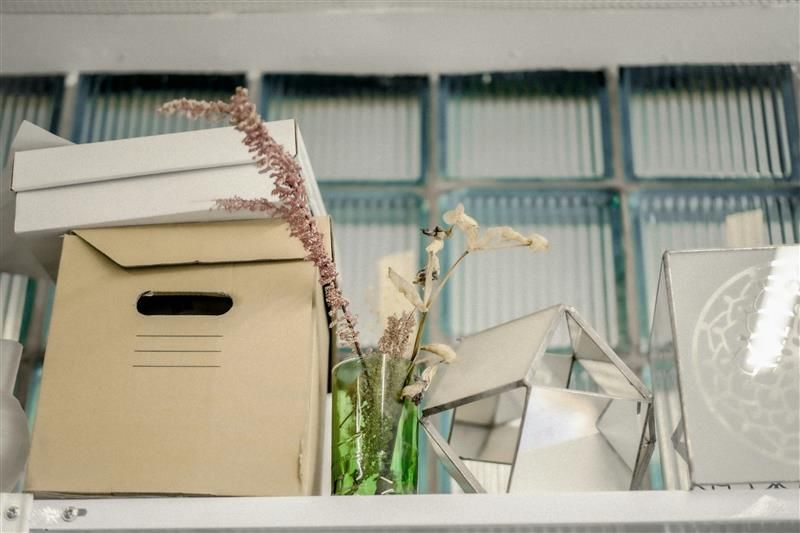
HOW TO PREVEN T MOULD AND MILDEW IN A STORAGE UNIT
We’ve all been there – opening up a box that’s long been stored under the stairs or in the loft, eagerly hoping to retrieve that vintage jacket or family photo album, only to find it ruined by mould or mildew.As well as damaging valuable belongings and causing horrible smells, both mould and mildew can damage your health too.It’s for these reasons that you need to ensure your storage unit is as mould and mildew proof as possible. This post will provide expert storage tips and outline the necessary precautions you should take to keep your belongings safe during long-term storage.
What exactly are mould and mildew?
Mould and mildew are both types of fungi that thrive in warm, moist and humid environments. Whilst most commonly found in kitchens and bathrooms, they can and will grow anywhere that is warm and has moisture, including on fabrics, wood, stone and even plastic.Whilst sharing many similar properties, mould and mildew do have some notable differences:
- Mould – a fungus that can be various colours, including brown, blue, green and yellow, but is most typically black. Mould also generally has a furry or slimy texture, and is a bigger threat to human health than mildew.
- Mildew – a fungus that is typically grey or white in colour. It generally grows in flat patches, has a powdery texture and a notable musty smell.
- Whether it’s mould or mildew, you’ll want to make sure you protect your storage items from all potentially dangers. Let’s start with your storage unit…
Storage unit considerations
- Airflow – when it comes to preventing mould and mildew in your storage unit, moisture is the enemy. These fungi thrive in moist environments so maintaining proper airflow is crucial in a storage unit. Avoid pushing boxes and larger items against each other and the unit’s walls. Keeping space between items helps air circulate and keeps the storage unit dry.
- Off the floor – this is especially the case if your storage unit has a concrete floor, as concrete is porous and can draw up moisture from the ground. While this is much less of a problem if your storage unit is a metal container (as with Flexible Storage self storage units), it is still advisable to use shelves and cabinets in your unit, as well as covering the floor with wooden pallets. This will keep your stuff off the floor and the air circulating effectively.
- Humidity levels – while this may not be as big a consideration in the UK as it is in warmer climates, it’s important to ensure that the humidity level inside your storage unit does not exceed 50%. Keeping a hygrometer in your storage unit and regularly checking it will help you gauge whether you need to take action on warm days, such as using a dehumidifier.
- Regularly check your unit – you should never leave your storage items for long periods of time. Make it a habit to check up on your storage unit at least once a month, assessing your belongings for any early signs of mould or mildew. Even just opening up your storage unit and moving some items around will allow air to flow and help you better inspect your possessions.
Now that you know the things to look out for regarding your storage unit, here are some professional packing tips to protect your belongings from mould and mildew…
Packing considerations
- Proper storage materials – unfortunately, if you want to ensure your items are as safe as possible, plastic bin bags or old delivery boxes just aren’t going to cut it. The only way to guarantee the maximum amount of protection is to use purpose-built storage materials such as robust cardboard boxes, industrial bubble wrap and hardy furniture covers.
- Dry items thoroughly – it’s imperative that every item you put into storage is 100% dry. Just one small damp item could spell disaster for your entire storage unit, as mould and mildew will quickly contaminate other items. Clothing and upholstery are particularly at risk as they can easily retain moisture. Be vigilant when cleaning your belongings before putting them into long-term storage, and give them plenty of time to dry.
- Pack desiccators – one of the best ways to minimise the levels of moisture in your storage unit is to utilise moisture-absorbing agents called desiccators. The most commonly used desiccators are silica gel packets, but can also include salt, rice and even cat litter. Desiccators should be packed alongside the contents of boxes and cabinets, as well as placed freely in an open container inside the storage unit.
- Avoid plastic covers – many people make the mistake of covering storage items in plastic covers. While they may be useful to protect clothes in your wardrobe from dust, they tend to trap moisture, which is terrible for long-term storage. Cardboard or paper covers are much more preferable as they allow air to circulate, helping your storage items breathe.
- Choose your storage unit with care
So there you have it – top tips on how to prevent mould and mildew in a storage unit. Where you store your belongings is just as important as how you pack them. It’s crucial that you choose a storage facility that has your best interests at heart. At Flexible Storage, we always put the safety of our customer’s belongings first. Our fire and waterproof steel self storage units will keep your possessions safe, while our professional packing materials can help keep them in the best possible condition. With 24-7 CCTV surveillance and 365 day customer access, all eyes will be on your stored items to provide the maximum level of protection. For more advice on how to pack a storage unit, get in touch with our friendly team today. One of our professional storage consultants can talk you through your self storage options and even provide you with a tailored quote.








